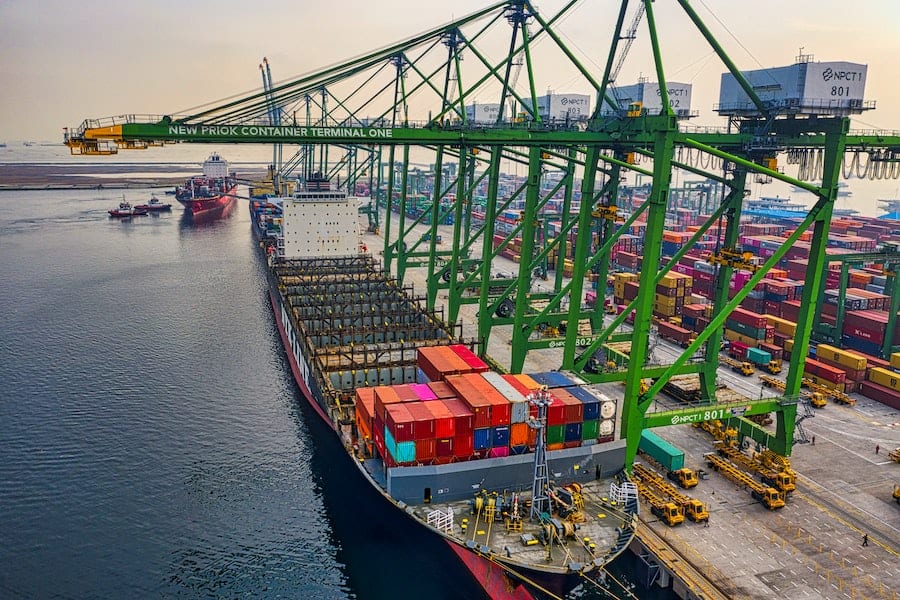
Knowing how freight forwarding works can be very useful, especially for transporting bulk goods from one country to another.
In the supply chain, freight forwarding helps facilitate the seamless movement of goods from one location to another.
Acting as intermediaries between shippers and carriers, freight forwarders ensure that goods are transported securely and efficiently.
Leveraging their knowledge of trade regulations, logistics networks, and transportation modes, they optimize the flow of goods.
This guide will provide an overview of how freight forwarding operates and explain why engaging freight forwarding services is highly advantageous.
What Is Freight Forwarding?
Freight forwarding involves organizing and managing various aspects of the shipping process (air and sea), such as transportation, documentation, customs clearance, and insurance.
It entails planning, organizing, and monitoring the entire transportation process, ensuring that goods are delivered efficiently and on time.
Freight forwarders such as https://www.divinetrans.com/page/global act as intermediaries between shippers and carriers, handling various aspects of the logistics process..
Freight forwarding involves a range of activities,
- Negotiating transportation rates,
- Selecting the appropriate mode of transport (such as air, ocean, or road),
- Arranging for storage and warehousing,
- Tracking the shipment throughout its journey.
Freight forwarding plays a role in todays interconnected economy. As businesses expand their operations across borders, it becomes crucial to ensure the timely movement of goods.
Freight forwarders offer assistance by helping navigate the complexities of shipping, ensuring that goods reach their intended destination on time while also complying with all necessary regulations.
How Does It Work?
The process begins with a consultation between the shipper (the party sending the goods) and the freight forwarder. The shipper discusses their shipping needs, cargo details, destination, and specific requirements.
1. Export haulage
The initial step in freight forwarding is export haulage. It entails moving merchandise from the shippers’ place to a specified departure point for packaging, booking, and shipping purposes.
2. Item checkpoint
During this phase, the freight forwarder conducts an examination of the cargo to make sure it adheres to shipping regulations and has all the documentation.
The cargo’s weight, dimensions, and packaging are checked. Any discrepancies or concerns are promptly addressed to prevent any complications during transportation.
3. Export custom clearance
Here, the necessary customs procedures and documentation are completed to allow the goods to leave the country of origin.
This stage involves submitting documents, such as commercial invoices, packing lists, and export declarations, to the customs authorities for clearance.
4. Cargo consolidation
For less-than-container-load (LCL) shipments, cargo consolidation is done. Freight forwarders consolidate smaller shipments from different shippers into a single container to optimize space and reduce shipping costs.
5. Transportation
The freight forwarder arranges transportation to the destination country once the cargo is ready for export and customs clearance is obtained.
The mode of transportation (sea, air, or land) is chosen based on factors such as cargo type, destination, and budget. The forwarder liaises with carriers to book cargo space and schedules.
6. Tracking and monitoring
The freight forwarder track and monitor cargo during transportation in real-time. As a customer you can stay updated on the location and status of your cargo and this can give you peace of mind.
7. Import custom clearance
Import customs clearance is required upon arrival at the destination port or airport. All the necessary customs procedures and documentation are completed to allow the goods to enter the destination country.
Customs duties, taxes, and other fees may be imposed at this stage, which need to be paid before the goods can be released.
8. Destination arrival and handling
After import customs clearance, the goods are unloaded from the transport vessel and arranged for safe storage or distribution at the destination.
9. Import haulage
Import haulage involves transporting goods from the destination port or airport to the recipient’s location.
The Benefits Of Using Freight Forwarding
Using freight forwarding services offers many benefits for businesses and individuals involved in international trade and shipping. Here are ten key advantages of utilizing freight forwarding.
1. It’s cost-effective – Freight forwarders can negotiate favorable rates with carriers and optimize shipping routes to minimize client costs.
2. Expertise and knowledge in shipment – Freight forwarders possess extensive knowledge of international shipping regulations, documentation requirements, and logistics intricacies.
Their expertise ensures that shipments adhere to legal and compliance standards, reducing the risk of costly errors or delays.
3. Time-saving – Freight forwarding eliminates the need for businesses to handle logistics tasks themselves, saving them valuable time and resources.
Freight forwarders take care of the entire shipping process, including documentation, customs clearance, and tracking, allowing businesses to focus on their core operations.
4. Risk management – Freight forwarders often offer cargo insurance options to protect against loss, damage, or theft during transit. This risk management component provides peace of mind to shippers, as they know their valuable cargo is covered.
5. Customized solutions – Freight forwarders offer tailored shipping solutions based on the specific needs of businesses.
Whether choosing the right mode of transportation, optimizing cargo space, or providing specialized handling for fragile or hazardous goods, freight forwarders customize their services to meet individual requirements.
6. Real-time tracking – Freight forwarders offer advanced tracking and monitoring systems, allowing shippers to keep real-time tabs on the status and location of their cargo.
Conclusion
If you’ve made it this far, you probably know how freight forwarding works. Freight forwarding plays a role in ensuring the movement of goods between countries, making the whole operation much more efficient.
Freight forwarders work closely with shippers, carriers, and customs authorities to oversee all aspects of the logistics chain. This includes handling documentation, coordinating transportation, and managing customs clearance procedures.
Thanks to their knowledge and expertise in navigating regulations and overcoming obstacles, businesses can focus on their core activities while leaving the complexities of shipping in the hands of professionals.




















